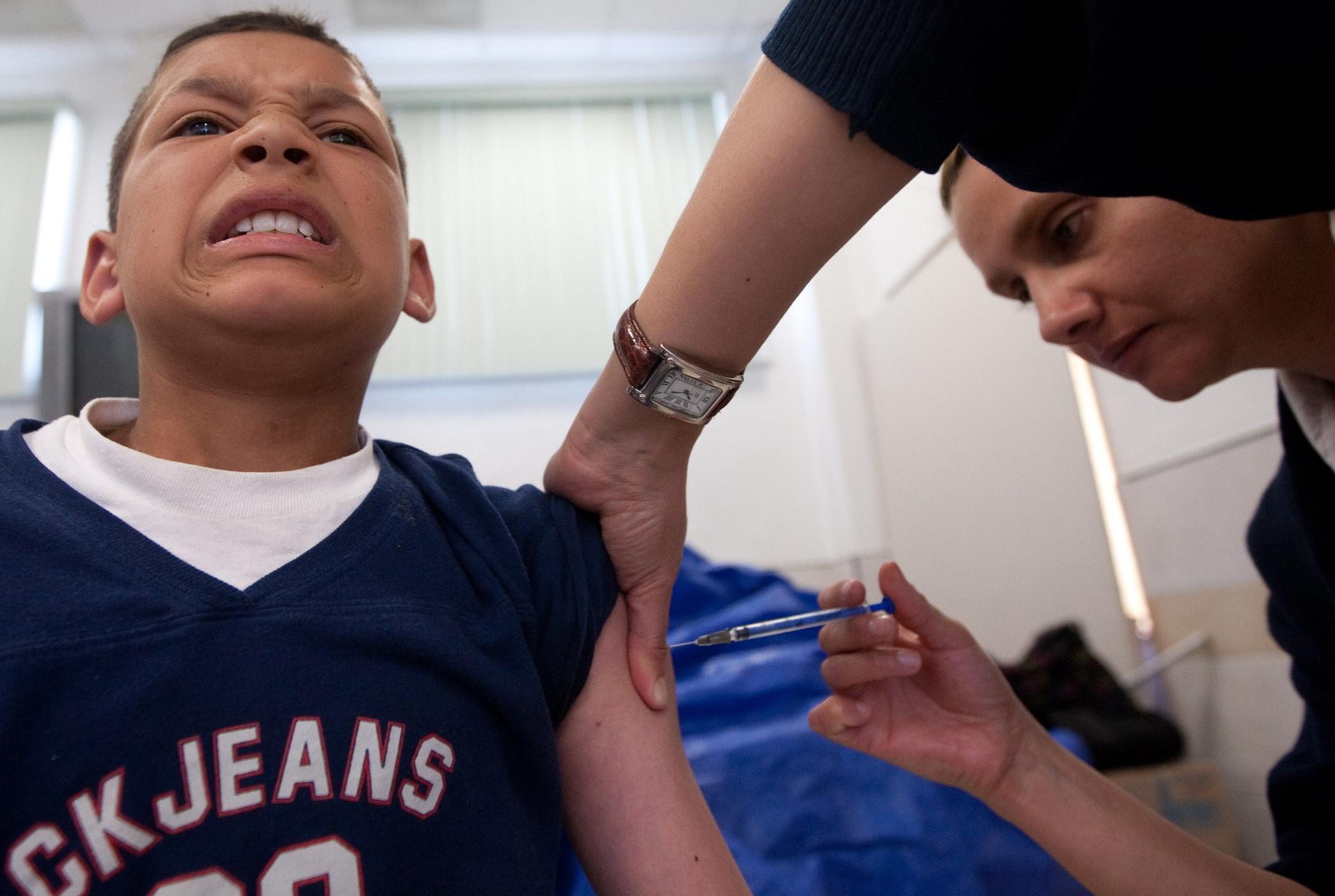Swine flu pandemic toll 15 times higher than WHO estimates, CDC finds
A boy is vaccinated during a day of the vaccination campaign against Influenza A H1N1 Virus (swine flu) in Ciudad Juarez, Mexico, on March 28, 2011.
The swine flu outbreak of 2009-10 may have killed 15 times more people worldwide than originally estimated, US Centers for Disease Control and Prevention (CDC) researchers have reported.
The study, published on Tuesday in the London-based journal Lancet Infectious Diseases, said the toll was closer to 284,500 people — not the 18,500 estimated by the World Health Organization (WHO) at the time based on laboratory testing, Reuters reported.
It might have been as high as 579,000 people.
Additionally, the CDC researchers confirmed that the H1N1 influenza virus killed an unusually high number of young people — 80 percent of victims were under 65 years old, they found.
By the time the WHO declared an end to the pandemic in August 2010, H1N1 had been reported in more than 214 countries, Bloomberg reported.
More than half the deaths may have been in southeast Asia and Africa, rather than the 12 percent of officially reported fatalities, the authors of the CDC study wrote, according to CNN.
The H1N1 virus was reported in more than 214 countries through August 2010, when the WHO declared an end to the pandemic.
More from GlobalPost: Swine flu kills nearly 200 in Mexico already in 2012
During the initial outbreak, many countries in these regions lacked the lab facilities to identify whether deaths occurred from H1N1-related diseases.
"This pandemic really did take an enormous toll," Dr. Fatimah Dawood, the study’s leader at the Centers for Disease Control and Prevention, told Reuters.
"Our results also suggest how best to deploy resources. If a vaccine were to become available, we need to make sure it reached the areas where the death toll is likely to be highest."
In an editorial published along with the study in the journal, Cecile Viboud of the National Institutes of Health and Lone Simonsen of George Washington University wrote that the new estimate showed the difficulty in tracking the effect of a pandemic as it was unfolding.
The WHO pointed out at the time that it had grossly underestimated the toll, mainly because many victims lacked access to medical systems and went uncounted, and because the H1N1 virus was not always detectable after a victim died.
Despite this, it was criticized for exaggerating the H1N1 threat.
We want to hear your feedback so we can keep improving our website, theworld.org. Please fill out this quick survey and let us know your thoughts (your answers will be anonymous). Thanks for your time!
